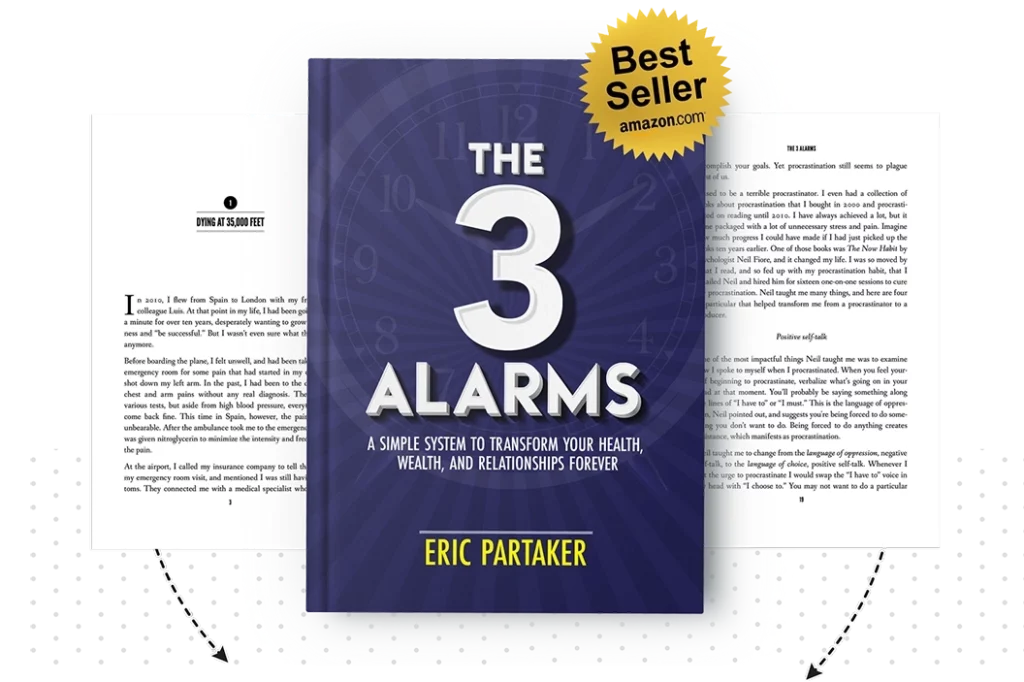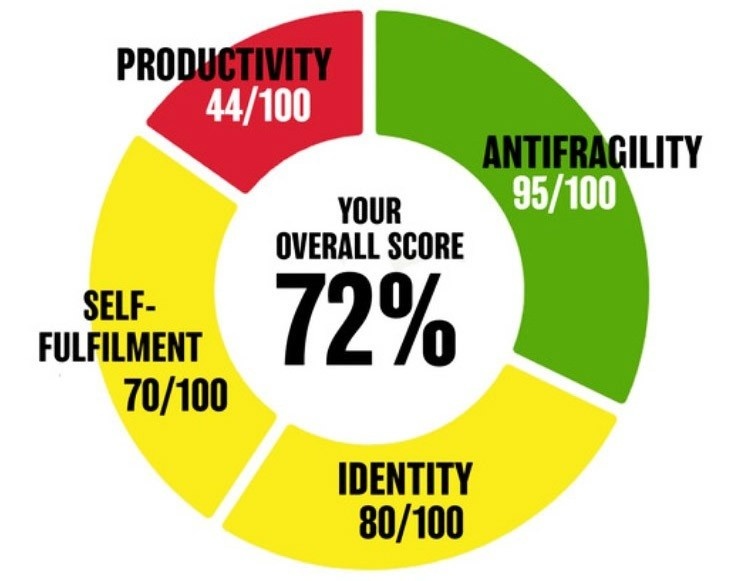SUMMARY
- Have you ever felt resistance to selling? Maybe you just don’t feel confident in your approach, or when it comes to that moment of making a proposal you freeze up. The truth is that unless you overcome your resistance to selling, your potential is going to be severely limited because it’s such a core skill in so many areas of business and life.
- It all starts with your mindset. As Byron Katie put it, “We can have just about anything we want in life, provided that we’re willing to go through 1000 No’s.” With my coaching business, I made it my goal to make as many proposals to new potential coaching clients as possible, focusing on the process rather than the outcome
- Whatever you’re selling there will be very specific, tangible benefits that everyone tends to focus on as well as intangibles. You have to focus on the intangibles that relate to people’s hopes and fears in life to really get through to them.
- In any sales discussion, the other person sees gaps somewhere in their performance, in their company, in their life that they want to close. It’s your job in that discussion to really hunt for those gaps and convince them you can fill those.
- After a first sales call, book in a follow up if they haven’t made up their mind. Otherwise, there will be no structure to the process and they will likely forget all about following up with you, even if they were interested.
TRANSCRIPT
Have you ever felt a lot of resistance to selling? You want to be bringing in more sales, but you just don’t feel confident in your approach, or when it comes to that moment of making a proposal, or actually completing the sale? You back off, you’re worried about how you might come across. Well, the truth is unless you overcome your resistance to selling, your potential is going to be severely limited.
Hi, I’m Eric Partaker. I really struggled with selling. I struggled with the confidence of getting out there and selling what I was offering to other people. It took me a long time to come over it. I had to do a lot of research on what the best do when it comes to selling and what their approach is. Today I want to share with you four things, and weave a story in there about how I overcame my resistance to selling.
The first thing is that it all starts with mindset. So Byron Katie – if you don’t know Byron Katie, you should check her out – she’s absolutely fantastic. She’s written some great things, she’s a really great thinker. I came across this phrase where she said, “We can have just about anything we want in life, provided that we’re willing to go through 1000 no’s.”
Now, I’m a coach. I coach entrepreneurs, CEOs, people just trying to reach their full potential in life, all from a peak performance point of view. I took that phrase from Byron Katie and I made it my goal. I actually said, “Okay. If yes lives in the land of no, then why don’t I make it my goal to get 1000 no’s?” I don’t really want 1000 no’s, but I know a certain percentage of yeses will flow out of those no’s.
So, I made it my goal to make as many proposals to new potential coaching clients as possible. Specifically, 1000 over a four year period, because that meant that if I was making five proposals a week, – roughly 250 a year over four years – I would have potentially racked up 1000 no’s. By becoming super comfortable with the fact that the no is actually the goal, but secretly obviously knowing that out of those no’s would flow yeses, I was less worried about the rejection and I was just focused on that lead measure. Just continue making proposals. Focus on the process, not the outcome. Let the process itself become the goal. That mindset shift was massive for me. The other thing that you have to do is to remember what it is that you’re selling. So, you can think about it super tangibly, but you can also think about the intangible side of it.
So again, let me take this back to coaching as an example. So I’m selling – I can think about it very, very tangibly – a certain number of sessions, we’ll have a coaching relationship over a set period of time. Or I can think about it more intangibly, such as that I’m actually going to help someone close that gap between who they are and who they’re capable of being and their business in life, such that they can reach their full potential. Such that they can achieve their dreams, such that they can avoid their nightmares or the things that are holding them back. When I make that switch in my head, when I remember what it is that I’m truly selling and the opportunity, the intangible benefits that it creates, and the person that I’m selling to, suddenly it changes the way I go about that. It’s really putting me in tune with the tremendous benefit and impact that I can create in the life of the person on the other end of the phone, or on the other end of a zoom call, or on the other side of the table.
So really think about that. Take a moment and think about what it is that you’re trying to sell. There’ll be very specific, tangible benefits that everyone tends to focus on, but what are the intangible things? How might this, on the periphery, help your client or prospective client win more games or win more market share? Or perform better, or feel happier and more engaged? Think about that, because there are always intangibles typically associated with the tangible things that we’re trying to sell.
The second thing that I like to think about when it comes to overcoming resistance to selling is the power of a structure or a framework. Have a structure or a framework to your conversations. Don’t just jump straight into them and proceed in a structured list fashion. I’ll give you an example again with coaching. So one of the things that I tend to do when I start off on a call is just ask the person to tell me a little bit about themselves, and that I’d like to do the same.
A key question that I ask them is, “What prompted your interest in this meeting today, in a call today?” The meeting wasn’t accepted for no reason, there must be a deep seeded reason for us connecting, for us talking, having that discussion in that moment. I just want to make sure that they’re voicing that, and is there out in the open, front and center, and really get them to connect to that as well.
The other thing that I like to do is explore, what are their dreams around whatever that product or project is. What do they hope to achieve? Again, this is getting back to the intangibles part, but I’m trying to understand, if we successfully implement what we’re trying to do with this project or initiative, what would that success look like?
What are the benefits of it? What might that look like in three years’ time? How might that positively impact others as well?
Then the third thing that I do is hunting for the gaps, as I call it. In any sales discussion, the whole point of having that discussion is that the other side thinks that there gaps somewhere in their performance, in their company, in their thought process – gaps that they want to close. It’s your job in that discussion to really hunt for those gaps. So one of the things I do, again, I’ll give you an example in a coaching call, is I’ll ask people to rate themselves on a scale of one to 10 as a CEO. So a 10 is absolutely perfect, I have no room for improvement.
A one means you can only go up, what’s your rating? How would you rate yourself? They might say seven, and then I might say, “Well, what’s one thing that you could do better more often and more consistently, which would improve your score?” They might say to me, “Well to become a bit more consistent in my output or my productivity for the day.” Then I ask them, “Would you like some support in closing that gap?” So every time that I’m hunting for a gap and identifying it in a sales conversation, I’m then asking them, “Would you like some support and closing that gap?” And I’m taking note of all of those support points throughout the whole conversation. At the very end of the conversation, I then make a proposal. I say something along the lines of, “Well, based on everything that I’ve heard today in this conversation, shall I tell you how I think I might be able to help?”
For you, you might say, “How shall I tell you how I think this product or our solution may help?” I make sure that when I’m talking about that proposal, that I’m tailoring back the program or your product or solution bespoke to them, in a way that’s mapped back to the gaps that we’ve identified and that they would like some support and closing. Taking them through how we would close each and every one of those gaps.
Last but not least – this is very, very important. I let them think about it. I don’t demand that they make a decision there and then in the meeting. Often, if we’re selling things that cost a fair bit of money, we need to allow the person time to think about it. It’s powerful to do that because you also demonstrate to the person that if it’s a no that’s okay, too.
So typically what I’ll say is, “Well, look, I’ve really enjoyed the conversation. I think there’s a lot of great things that we could do together, but now I’d really love it if you just take some time to sleep on it and why don’t we reconnect later?” Here’s a little quick trick that I do. There’s a meeting appointment always in my calendar for that meeting that we were just doing. And I literally go into my calendar and say, well, how about we just update our existing appointment to a day or two from now when that person is free? So we can just check in and hear how they’re feeling about whether or not they’d like to proceed. That way, we have a set time where we’re actually gonna speak again – it’s all booked in.
We don’t have to worry about a follow up. The worst thing, and I highly advise that you don’t let a sales conversation end this way, the worst thing is to allow the person just to end the conversation with, “Well, thanks. You’ve given me a lot to think about, so let me do that and I’ll come back to you.” ‘I’ll come back to you’, is the equivalent of, ‘I have no idea when I’m going to come back to you. I might come back to you. I’m not a hundred percent sure. If I do, great. If I don’t, so what?’ You don’t want that to be the end of your sales conversation, which is why it’s very, very important to just take that existing meeting appointment and rebook it right there at the end of that conversation. Do all these things. From a mindset point of view, to having a structure for your conversation, hunting for the gaps in making your proposal where you’re identifying the gaps that you’re going to close.
Once again, you’re recapping those and describing how your solution will solve all of those. Give them time to think about it, but make sure you’re booking in that followup. Do all of those things, and I think it will help you overcome your resistance to selling as you start to rack up better and better results.




